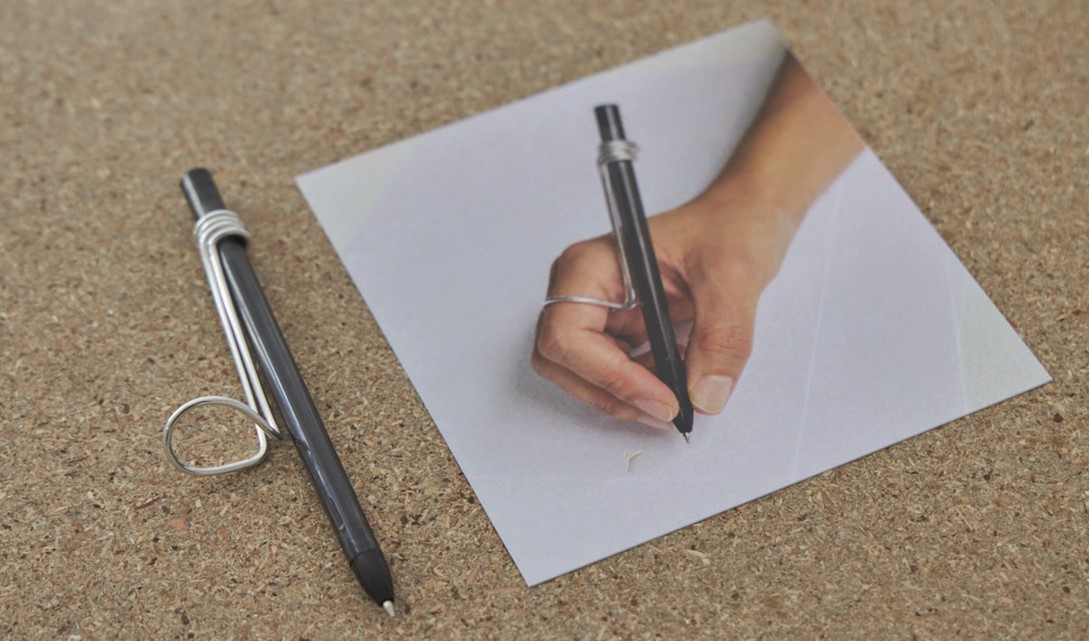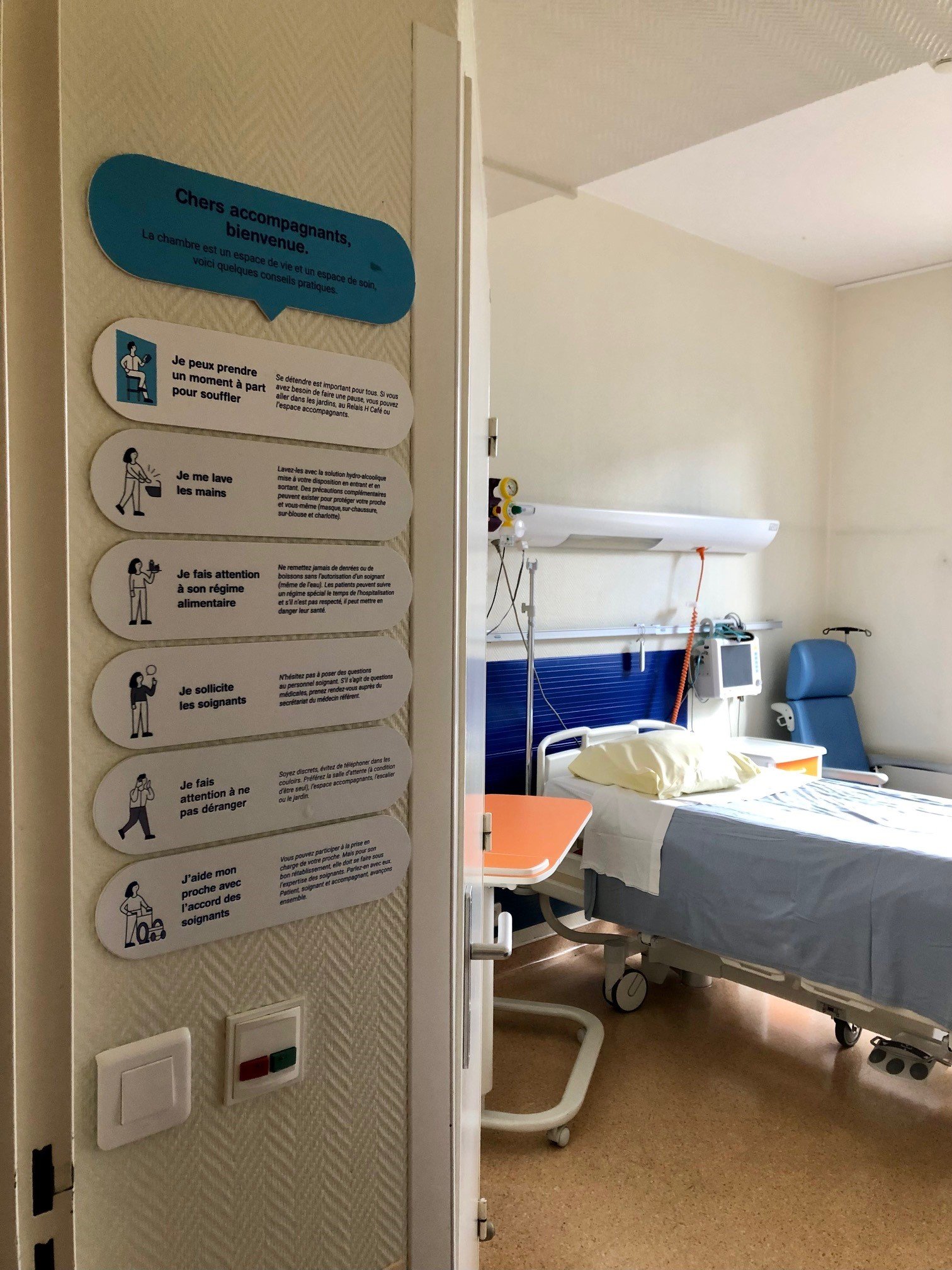Care Design, beautiful and inclusive
Objects, shapes, colors – how can they help vulnerable people live their lives fully, remain independent and engage in social interaction? That question lies at the core of the care design movement. For the past five years, Fondation de France has been supporting new initiatives.
Getting dressed in the morning, helping yourself to a coffee, making a shopping list, planning your route and walking around your neighborhood are all routine tasks that can be a real headache for some. That’s because every-day objects and living environments are designed and produced for consumers and users who have the full command of their faculties. And yet millions of elderly people, people suffering from a chronic condition, mental disorder, or physical disability, as well as pregnant women, face obstacles – big and small – in their daily lives.
True, solutions like wheelchairs and crutches have been developed to alleviate major disabilities. But they are generally standard, with no regard for esthetics, and are designed without input from the people concerned. In a world where image is of huge importance, ugliness turns into yet another form of exclusion... The past few years have seen the design sector focus on these issues with a specific approach and clear demands. The idea is to address both ergonomics and style and to do so not just for users, but with them. Hence the name “care design.”
Young talents advancing the idea of care
Fondation de France is receptive to these initiatives, thanks to a range of related programs and grants. Especially for a new generation of 18 to 35-year-old designers who benefit from a Déclic Jeunes bursary, providing them with financial and methodology support to develop a non-profit project. Take Eva Hardy, a 2018 grantee who has designed a tea set for people suffering from tremors. Eva, then 25, was following a design course at the Ecole Européenne Supérieure d’Art de Rennes. “I myself suffer from ‘essential tremor disorder’ and I was involved in charitable projects when I was still a teen. So my entire life and family environment had prepared me for care design!” she says. “The Déclics Jeunes grant meant that I could finalize the design of the pieces, raise the profile of my project and contact craftspeople to prepare for prototyping and manufacture. There was also an environmental specification: the set would be made in ceramic, not plastic.” Eva is following a doctoral program. Her thesis topic is about design serving physical health and well-being in retirement homes. In the meantime, she has also met Célia Guye, a winner of the 2021 Déclics Jeunes grant.
Célia, who also trained at the school of design in Rennes, has developed a project for assistance with writing. The project, which was led together with an occupational therapist, was carried out for and with patients in rehab because of an accident or chronic condition. “Being able to hold and use a pen again contributes significantly to autonomy,” she insists. The tools she designs are perfectly adapted to each problem (nervous disorder, sensitivity loss, muscular deficit, etc.) but they are also beautiful, jewel-like objects. The experience helped her build a comprehensive project – offering rehab centers one-off care design activities, thanks to a 3D printer to manufacture small production runs. The approach is based on a co-design method involving patients and healthcare workers. Made-to-measure objects are produced by adapting a range of objects and tools.
 © Alexandre Texier
© Alexandre Texier
Together, Eva and Célia have created a nonprofit, Studio Stimuli, to develop products and respond to calls for projects at the crossroads of healthcare and design.
Meaningful design that promotes interaction
Whereas mobility and motor function keep care designers busy, the field of communication and social interaction also provides a vital testing ground. The Fondation de France Patient-Centered Care Program supports a design approach based on... hospitality in hospitals! Led by lab-ah (laboratory for welcome and hospitality, affiliated with the Institute Psychiatry and Neuroscience of Paris in the University Hospital Group – GHU), the project first focused on the experiences of patients’ carers in the neuroscience department. “Interviews revealed several sources of frustration,” explains Marie Coirié and Benjamin Salabay, lab-ah designers. When patients were admitted, carers felt they were given a huge amount of information, which was impossible to remember and often phrased negatively – with many injunctions and prohibitions. Carers also felt the need for a quiet space during visits, to catch their breath. Waiting rooms were too big and impersonal for that.” Armed with these observations, two things became clear to the team. “Firstly, these apparently innocuous problems make for tension between patients, loved ones and healthcare workers, constantly sapping morale. Secondly, solutions need to be found with healthcare workers.” The team offered writing workshops to healthcare workers. They completely redesigned the information pathway for patients and their circle. Providing the right information – considerately – in the right place and format (words, colors, illustrations, etc.) avoids many points of friction. So does designing “corners” in various locations of the department, where carers can enjoy some restorative peace for a while. The pilot test supported by Fondation de France goes way beyond its implementation in a specific building. It inspires the design of future GHU buildings that are to be completed in 2023. It adds to managers’ thinking on how to incorporate reception in the healthcare workers’ training and management. It also constitutes the basis for a research program led by students of École des Cadres de Santé (a healthcare management school). “Design is both a physical and cultural activity,” claim Marie Coirié and Benjamin Salabay. “It’s not interior decoration, shapes and colors that we’re working on – we’re providing meaning and social interaction. These are tools professionals can make use of, so that lasting attention is given to hospitality.”
From prototypes to production runs
Testing in order to model large-scale solutions is a concern that lab-ah shares with Muriel Robine, founder of nonprofit Cover Dressing, which is supported by the Fondation de France Disability Program. Her calling for care design was shaped over time by her long-standing experience as a local politician, in charge of disability issues. She has now launched a vast project that focuses on inclusion via fashion. “Our conclusion is that garments offered by the textile industry don’t take any of the constraints of thousands of patients and disabled people into consideration,” she says. “These people are condemned to either wearing inappropriate and therefore uncomfortable clothes or functional but unattractive ones. Looking and feeling good in what you wear is an essential element of your self-esteem and relationship with others.”
Muriel isn’t just looking to design a few models. She wants to “embed” clothing brands and industry, to engage in a complete paradigm shift. Her method is to organize action-research workshops bringing together three stakeholders. Patients, ready-to-wear professionals and healthcare workers sit down together to solve a practical problem. For instance, Promod (a French fashion chain) is working with patients and healthcare workers on the issue of breast cancer. Fallout from the disease and treatment protocols can lead to a whole range of problems with arm and shoulder mobility, scar hypersensitivity, an asymmetric bust and so on. How can lingerie and tops such as shirts, blouses, sweaters and T-shirts be adapted to these constraints without giving up on fashion? Each workshop starts with a survey and a list of requirements, moves on to the co-designing stage and is expected to lead to prototypes, ready for manufacture. Overall, this project will involve four brands and four different conditions, over 3 to 4 years. What comes after that? “All the accumulated know-how acquired in the workshops will be set out formally, so that it can be shared with other brands, thanks to e-learning programs,” adds Muriel Robine. “Above all, when you work on extreme situations – illness, disability, you become aware of the entire discrimination chain. Why does the fashion industry exclude people below a size 4 and above a size 8? This sort of workshop should help change perception and practices!”
This is how care design acts as a powerful force for transformation. There is a fluid borderline between pathology and normality and every one of us will one day see a decline in our faculties. In the end, working with the most vulnerable people benefits everyone. Any young parent knows that the dipped kerb at pedestrian crossings, initially designed for wheelchairs, makes it easier to push a baby carriage around...
How does Fondation de France’s support provide impact?
Eva Hardy and Célia Guye, Studio Stimuli: “A confidence boost”
“We were still being trained and had just about graduated. In addition to the financial support, the Déclics Jeunes Fondation de France label gave us a huge confidence boost to help us pitch our project, open doors and convince partners to work with us.”
Marie Coirié and Benjamin Salabay, lab-ah: “Legitimacy!”
“In the face of the healthcare issues to be tackled, the relevance of design is not always readily understood in a hospital setting. The Fondation de France brand has changed the perception of our project and enabled us to become part of the design process for reception and the hospital’s new premises.”
Muriel Robine, Cover Dressing: “Listening for the details”
“A project like ours is a little crazy! Fondation de France had launched an appeal for projects on inclusive practices, with very broad scope I was able to promote its originality and I was also supported in bringing it to fruition.”
FIND OUT MORE


